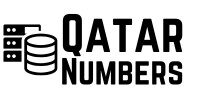Most marketing professionals spend a few seconds creating different types of CTAs (Calls to Action).
You just need to write something short, snappy, and direct, right?
Well, it’s not that easy.
According to a VWO case study , by redesigning the vietnam whatsapp number data 5 million CTA and surrounding visual elements, Open Mile increased its lead generation rate by 232%.
Yes, even tiny details can be a call to action for humility.
So, which CTA is most effective for your different marketing strategies ?
And how can you use them to nurture leads and increase conversion rates ?
We’ve put together a handy guide to answer these questions (and more) below.
First things first: What is a call to action ( CTA ) ?
If you’re a little confused about the meaning and purpose of a CTA, don’t worry; you’re certainly not alone.
Simply put, a call to action is a written command domestic humanoid robot “walks on the street that encourages people to take a positive action (e.g., sign up for a newsletter or purchase a product). It’s an important part of your overall brand strategy.
CTAs can take many forms, including website buttons, text hyperlinks, or plain text.
They’re usually short and snappy, encouraging people to “buy now” or “learn more,” though they can be quite long. CTA buttons often look like this:
CTAs also appear in a variety of channels , including social media platforms , company pages , paid ads, blog posts, and more. In fact, every web page should have at least one CTA to guide users to your website .
Tailoring your CTA to a specific channel, target audience, or purpose is the trick to driving the most engagement.
For example, asking a potential customer to mobile lead sign up for a subscription service might require more convincing than asking them to read an article. This is when a compelling CTA is crucial to your marketing strategy.
Why is the call to action important?
Before we explore the different types of CTAs, let’s discuss the five main reasons why CTAs are important to marketers and businesses.
1. CTA drives action
CTAs help guide visitors on what to do next. Without them, people might visit your site, read your content, and then leave without taking any action. This is a missed opportunity to generate potential leads .
For example, a “Buy Now” CTA button on a product page can boost sales if you run an online store. However, HubSpot found that personalized CTAs are 202% more effective than basic ones.
Image via HubSpot
2. CTA improves user experience
Good CTAs improve your website’s user experience. They show visitors where to click to get what they want, creating a user-led customer journey .
Different types of CTAs are crucial on mobile devices where screen space is limited. Imagine how frustrated you would feel when you don’t know how to sign up for the service you want. Clearly visible CTAs can solve this problem.
